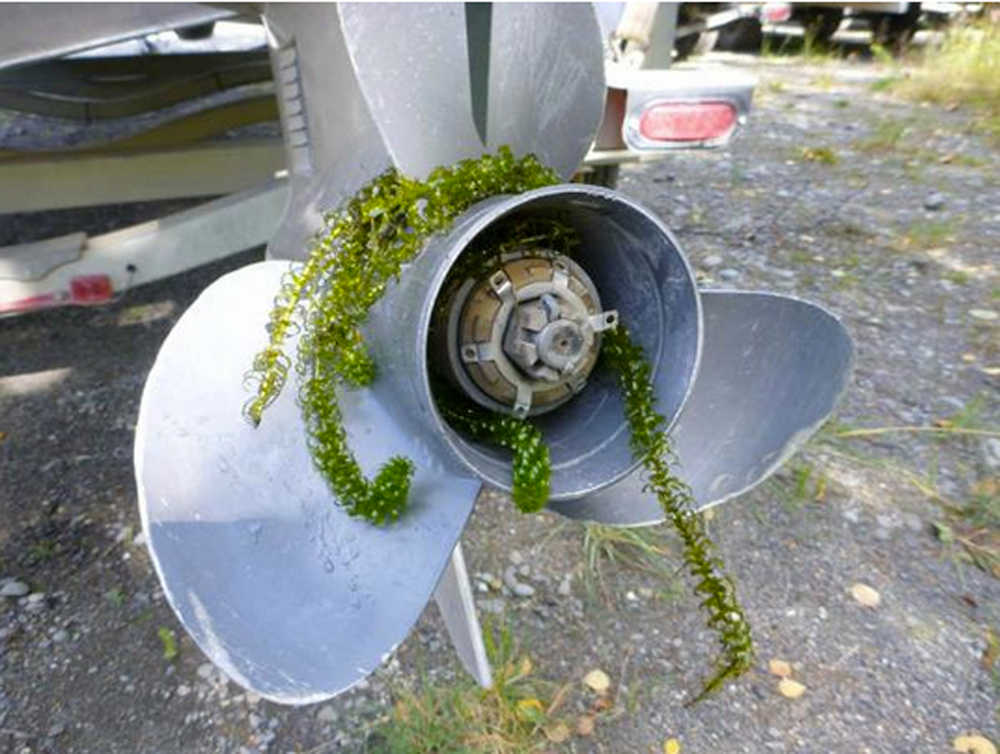Topping the Kenai Peninsula Borough’s federal priorities list for fiscal year 2015 are environmental concerns that, without action, could affect the local economy.
The top priority on the list of five project and programs is the eradication of elodea, an invasive aquatic plant.
“There is elodea and it can choke off lakes and salmon habitats, so that’s clearly very important to our economy,” Kenai Peninsula Borough Mayor Mike Navarre said.
John Morton, fish and wildlife biologist with the Kenai National Wildlife Refuge, said the plant first showed up in September 2012 and about 68 lakes with a high probability for having elodea on the peninsula were surveyed last summer. These lakes were ones with boat launches, lots of land owners and float plane traffic.
The plant was found in three lakes on the peninsula, Stormy, Daniels and Beck lakes. If the plant spreads to other lakes, it will be difficult to contain and the cost to try to get rid of it increases, Morton said.
Morton said elodea spreads easily because it doesn’t require seeds. If a fragment of the plant is transported to a body of water, it can clone itself and spread.
“That’s why we are so concerned about it,” Morton said, “that if we don’t get it while it’s still just in three lakes, we will not be able to stop it if it continues to spread.”
According to the description of the project, if the plant becomes so widespread that eradication from the lakes is impossible, the borough will “suffer substantial and irreversible economic, social and cultural impacts.”
“Our feeling is … that if we can go at it right now this year we might be able to successfully eradicate it from the Kenai Peninsula,” Morton said.
The borough previously requested a $700,000 allocation for the eradication in Gov. Sean Parnell’s proposed budget, but saw no money appropriated when the budget was released in December 2013.
Navarre said the elodea is a common problem and has been seen on federal, state, borough and private lands.
“We have to deal with the problem or we’re all going to suffer,” he said.
With a tight federal budget, Navarre said the elodea issue as well as the No. 2 priority, funding for Cook Inlet beluga whale research, are clear concerns for the borough. He hopes to see funding for the issues.
Navarre said with a flourishing oil and gas industry in the inlet, research is needed to determine how to regenerate the beluga species that calls the inlet home without negatively impacting energy development and exploration.
Also making the priorities list, with the federal government owning 60 percent of the total land within the borough, payment in lieu of taxes is being requested. According to the description, the borough’s budget is impacted by services provided to residents and visitors in relation to federal lands.
The borough is seeking federal involvement in its efforts to protect the declining king salmon population. “Without federal attention and involvement, no amount of local protections will be able to revitalize this fishery,” the request states.
Lastly, the borough is requesting the continuation of funding for the Spruce Bark Beetle Mitigation Program, which reduces wildfire damage by removing trees killed by the beetles. According to the Division of Forestry’s website, the beetles have killed trees on 1.2 million acres of forested land on the peninsula since the mid 1970s.
The assembly will vote on the list, which is a consent agenda item, at its meeting tonight at 6 p.m. at the George A. Navarre Borough Administration Building in Soldotna.
Kaylee Osowski can be reached at kaylee.osowski@peninsulaclarion.com.

